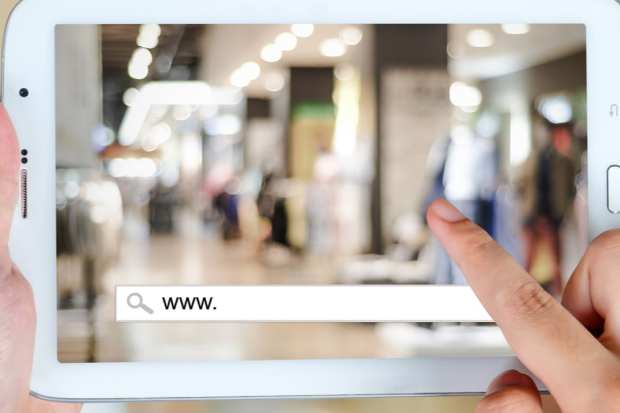Non-Essential Retail Warms Up For The Post-Crisis Economy

Wednesday’s Commerce Department retail sales figures showed in no uncertain terms that consumer spending for non-essential goods has taken a huge hit. While the overall drop was in the neighborhood of 8 percent, the plunge in non-essential goods like apparel (down 50.5 percent) and furniture (26.8 percent) represented a deep ditch for those businesses to climb out of. However, new data from PYMNTS shows that some non-essential items are moving online.
Data from the PYMNTS COVID-19 Tracker shows that the non-essential plunge occurred between March 6 and 17. The research sweep of March 6 showed that only 29.5 percent had cut back shopping for non-essential goods. In just 10 days, as coronavirus numbers climbed and stores were ordered to shut down, that 29.5 percent spiked to 77.6 percent, to be followed by another 10-point increase in the March 27 survey. What the survey predicted — and the Commerce Department numbers confirmed — was that online sales during March did nothing to close the spending gap for non-essential items. On March 17 only 25 percent of respondents said they were shopping for non-essential items online. That rose to only 32 percent 10 days later. Mobile commerce also stayed about even. By March 27 only 19 percent of consumers said they were shopping for non-essential goods via mobile.
While many analysts are predicting a complete cratering of non-essential retail for April, the PYMNTS data shows that the category is shifting to digital rapidly. This could mitigate the drop that is surely coming for the April numbers, regardless of whether stimulus checks or selective store reopening plans happen. However, it won’t be enough to help some retailers or the categories they do business in.
“The truth is no matter how big the government stimulus, lots of people have lost jobs, their financial predicaments are uncertain and there will be a contraction in consumer spend across every vertical except for food at home, but even there, we will see people ‘trading down’ and looking for ways to get more for their dollar,” Forrester retail analyst Sucharita Kodali said in a report by Digital Commerce 360.
The shift, while its effect remains to be seen, is definitely underway. The PYMNTS data shows that 52.8 percent of the consumers who said they were either very or extremely concerned about exposure to the coronavirus have now shifted their non-essential purchases to digital. What are they buying? Games and toys (up 35.9 percent) and apparel (19.1 percent) took most of the respondent’s choices.
“Pre-COVID-19, savvy retailers had long been investing in their e-commerce presence, creating the ultimate online experience for customers and working to make processes as seamless as possible, while the wave of digitally-native ‘cool’ brands who emerged further enticed customers to shop online. Shopping for clothes online has been the norm for some time and the convenience of it has undoubtedly amplified during the coronavirus pandemic,” Edited Market Analyst Kayla Marci told PYMNTS in an interview. “The pandemic has allowed retailers to work more creatively and explore ways to engage with customers across digital and social platforms, as well as enhance its virtual services.”
Marci points out that many fashion brands are using technology to set up shop for the post-crisis economy. Fashion brands like Fashionova are live streaming events and offering online styling services. Those are behaviors that could stick after the crisis abates.
“That said, even though these declines are clearly related to coronavirus, the sheer scope of the decline is a reminder that it’s simply not the case that there’s nothing people could buy under any circumstances — rather, under uncertain economic conditions, people are focusing their spending on essential goods and services,” said a report in Vox. “And, in a way, this reality is evidence in support of the idea that the way to stimulate the economy right now is through economic policy, rather than simply relaxing social distancing guidelines and hoping for the best.”
